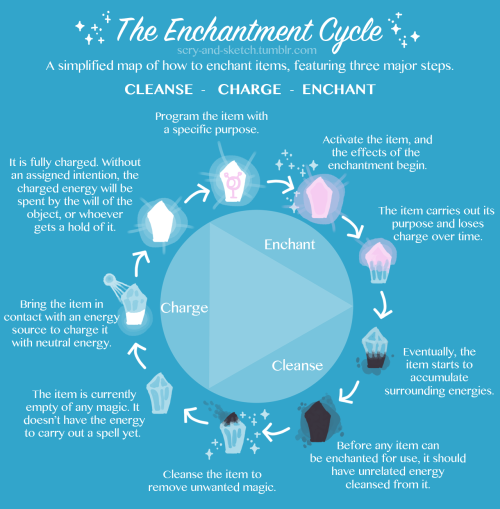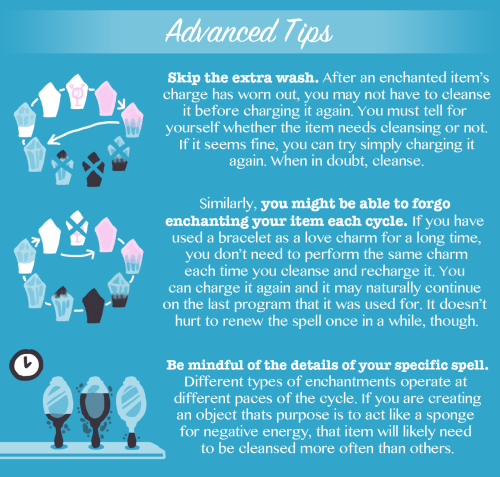Moss-pond - *:・゚✧*:・゚✧

More Posts from Moss-pond and Others

reblog and make a wish! this was removed from tumbrl due to “violating one or more of Tumblr’s Community Guidelines”, but since my wish came true the first time, I’m putting it back. :)

Pastel Daydreams
Store | Instagram
Historically Accurate Offerings to the Theoi
Zeus
Oak
Carnations
Olive branches
Styrax incense
Eagle, bull, swan images
Hera
Lilies
Peacock feathers or images
Pomegranate
Incenses
Cuckoo images
Athena
Olive branch/oil/fruit
Weavings
Myrrh incense
Perfume
Owl images
Apollon
Laurel
Red roses, sunflowers
Frankincense (manna) incense
Palm tree
Raven, swan, wolf, mouse, dolphin images
Artemis
Cedar, palm and cypress trees
Tokens of deer
Jasmine
Myrtle, white flowers
Frankincense (manna) incense
Amaranthus
Peanut
Wormwood
Deer, dog, bear, partidge, quail images
Hestia
Incenses
Chaste-tree
Pig images
Poseidon
Sea anemone
Myrrh incense
Pine
Bull, dolphin, horse images
Dionysos
Ivy
Grape vine
Pine
Styrax incense
Leopard, panther, donkey, bull images
Hermes
Tongue-shaped tokens
Rosemary, saffron
Almond tree and pine tree
Frankincense and styrax incense
Mint (for Kthonios epithet)
Cow, ram, hawk, turtle, hare images
Wild strawberry (purslane)
Ares
Bronze weapons
Frankincense (manna) incense
Swan, vulture, dragon/poisonous snake, owl images
Aphrodite
Roses, myrtle, anemone (poppy)
Quince
Apple, pomegranate
Perfumes and fragrances as incense
Dove, goose, sparrow, turtle images
Hephaistos
Daisies
Frankincense (manna) incense
Donkey, dog, crane images
Asklepios
Frankincense (manna) incense
Bread
Serpent, dog, goose, rooster images
Pan
Pine, beech trees
Fern
Wild flowers
Herbs burnt as incense and the smell of perfumes
Reeds
Goat, turtle images
Demeter
Poppy
Tokens of pigs
Styrax incense
Mint (for Kthonia epithet)
Wheat
Dove, bee, pig images
Persephone
Asphodel
Wheat
Hades
Pitchfork
Pomegranate
Daffodil
Styrax incense
Dried laurel leaves
Poplar, cypress trees
Mint
Daffodil
Hekate
Saffron
Rosemary
Garlic
Red Mullet
Amphiphon (candy)
Styrax incense
Dry laurel leaves
Oak
Ferret, dog, bull, lioness images
Source: LABRYS’ Hellenic Polytheism: Household Worship and Theoi.com
DIY: Herbal Salves
Salves are such a simple, effective, and useful medicine! They can easily be slipped into a purse, pocket, or first aid kit. Although semi-solid at room temperature, salves soften once applied to the skin, making them less messy to apply than oils. They also make great gifts and are an easy and approachable way to introduce newbies to the medicinal properties of herbs. Plus, salves can be crafted for a wide variety of topical uses. The addition of beeswax offers additional benefits including protective, soothing, emollient, nourishing, and healing properties.
Part 1: Make Herbal Infused Oil
To make salve, first craft your herbal infused oil(s). This will take several weeks, but once finished, the rest of the salve making process will only take minutes! You can also purchase pre-infused herbal oils if needed or if you wish to skip the process of infusing the oil.
Solar Method: When making herbal infused oils, we prefer the solar infused method. Place dried botanicals into a dry and sterilized glass jar. Some herbalists coarsely crush or grind herbs first, while others finely chop herbs and leave delicate flowers whole. Cover with Extra Virgin Olive Oil (or other carrier oil of choice with a stable shelf life) leaving at least 1-2” of oil above the herbs to allow the herbs to swell. Cap the jar tightly and place in a sunny, warm window. If desired, the jar can be covered with a bag or box so that the oil is not exposed to direct sunlight. Shake the jar once or twice per day, or as often as you remember. If the herbs absorb the oil, then add more oil so that they are always submerged. Allow to infuse for 2-6 weeks, or until the oil takes on the color and aroma of the herb. Once the oil is ready, strain using cheese cloth, and bottle into dry and sterilized amber bottles for storage. Make sure to squeeze as much oil as possible from the herbs so that you do not waste any precious oil! Herbal oils will keep for approximately a year if stored properly in a dark and cool place. Vitamin E Oil may also be added to prolong the shelf life.
Quick Method: Another way to infuse oils, which is sometimes necessary when herbal oils need to be created in a pinch, is the quick method which utilizes heat. Much care needs to be taken when creating herbal oils this way because you do not want to deep-fry your herbs! Place herbs in crock-pot, double boiler, or electric yogurt maker, and cover with Extra Virgin Olive Oil (or other carrier oil of choice) leaving at least an inch or two of oil above the herbs. Gently heat the herbs over very low heat (preferably between 100 to 140 degrees Fahrenheit) for 1-5 hours until the oil takes on the color and scent of the herb. Some texts recommend heating the oil 48-72 hours at a controlled temperature of 100 degrees Fahrenheit. Turn off heat and allow to cool. Once that the oil is ready, strain using cheese cloth, and bottle into dry and sterilized amber bottles for storage. Store in a dark and cool place, Vitamin E Oil may also be added to prolong the shelf life.
Part 2: Turn that Oil into Salve!
• 8 oz herbal infused oil(s) of your choice. Choose one or a combination. • 1 oz Beeswax (use Carnauba Wax for a vegan salve) • Vitamin E Oil (optional) • 10-20 drops essential oil of choice (optional). Some essential oils commonly used are Lavender and Tea Tree. • Glass Jars or Tin Containers
Place Herbal Infused Oils and Beeswax over a double boiler, and gently warm over low heat until the Beeswax melts. Remove from heat and add the essential oil and Vitamin E Oil (if using). Quickly pour into prepared tins or glass jars and allow to cool completely. Salves should be stored in a cool location where they will remain semi-solid and will not continue to re-melt and re-solidify. If stored correctly, salves will last for 1- 3 years. Yields 8 oz.
Note: The consistency of salves can easily be adjusted depending on your preferences. Use less Beeswax for a softer salve and more Beeswax if you’d prefer a firmer salve. You can test the consistency by placing a few spoons in the freezer before making your salve. When the Beeswax melts, pour a little salve onto one of the cold spoons and place it back into the freezer for 1-2 minutes. Once cooled, you can make adjustments by adding more oil (for a softer salve) or more Beeswax (for a firmer salve).
Herbs for Salve
You can make salve with a single herb or multiple herbs, depending on your needs. It’s useful to make a variety of herbal infused oils so that you can easily craft salve whenever you need it!
Arnica flowers: Can help treat physical trauma, bruises, strains, and occasional muscle pain. Use immediately after strenuous exertion or injury to prevent, relieve, and reduce swelling, bruises and pain.
Burdock root: For skin infections.
Calendula flowers: Wonderfully healing with all-around healing properties useful for a wide variety of skin irritations and conditions including wounds, insect bites, rashes, scrapes, abrasions, cuts, and much more. Suitable for sensitive skin and babies.
Cayenne Pepper: Warming, good for occasional sore muscles, alleviates occasional pain, and itching.
Chamomile flowers: Minor abrasions, cuts, scrapes, and wounds.
Chickweed: Soothing, helps with skin conditions, minor burns, and other skin irritations.
Comfrey leaf and/or root: Relieves occasional pain, swelling, supports muscle, cartilage, and bone. Assists with healing a wide variety of conditions.
Echinacea herb and/or root: Beneficial for minor sores, wounds, insect bites, and stings.
Ginger root: Warming, use for occasional sore muscles.
Goldenseal leaf and/or root: Useful for treating minor wounds and skin conditions.
Lavender flowers: Soothing, calming, relieves occasional pain, has healing properties beneficial for minor wounds and numerous skin conditions.
Myrrh Gum powder: Used for cuts, scrapes, scratches, and abrasions.
Nettle leaf: An effective herb for many skin conditions.
Oregon Grape root: Skin disinfectant for minor wounds.
Plantain leaf: Helps speed the recovery process, relieves and soothes insect bites and stings, poison ivy, itching, minor sores, bruises, blisters, and damaged skin.
St. John’s Wort: Craft the deep red-colored oil from fresh flowers. Beneficial for minor wounds, cuts, bruises, insect bites and stings, nerve support, scrapes, and minor burns.
Thyme: Used for cuts, scrapes, and occasional sore muscles.
Yarrow Flowers: Apply to bruises, minor wounds, cuts, scrapes, and areas with swelling and bleeding.
Please note that this is only a partial list, many other healing herbs can also be incorporated into salves.
For educational purposes only This information has not been evaluated by the Food and Drug Administration. This information is not intended to diagnose, treat, cure, or prevent any disease.
Source: herbal-salves




I’m not sure if this graphic would be helpful to any other beginner witches, but personally I wanted to make it to clear up some things to myself. NOTE: This is how /I/ understand the topic. For more witchy art, go here.
❣ Skincare Magick ❣

(Gif from this video)

Every so often, use some moon water to wash your face.
Avoid using essential oils directly on your face, they can clog your pores.
Apply body wash or soap to your skin in clockwise circles to open your body up to positivity.

Enchant your moisturizers, acne creams, and cleansers for an added boost.
Draw sigils in your face cream.
Try adding herbs and herb-based products into your routine. Witch Hazel is very popular for treating skin related issues.
If you use pore-cleaning masks, use them to pull the negative energies from your skin.
Use your ring finger to massage products into your skin to ground yourself.

Brew Black tea and then refrigerate it until it’s cool. Then apply it as you would astringent.
Use coconut oil to easily remove makeup. Cleanse and wash after.
Rub a sliced orange on elbows and heels to soften rough and cracked skin. Rinse when finished.
Massaging your face is a wonderful way to ground yourself or begin meditation.
❣ Skincare Magick ❣

(Gif from this video)

Every so often, use some moon water to wash your face.
Avoid using essential oils directly on your face, they can clog your pores.
Apply body wash or soap to your skin in clockwise circles to open your body up to positivity.

Enchant your moisturizers, acne creams, and cleansers for an added boost.
Draw sigils in your face cream.
Try adding herbs and herb-based products into your routine. Witch Hazel is very popular for treating skin related issues.
If you use pore-cleaning masks, use them to pull the negative energies from your skin.
Use your ring finger to massage products into your skin to ground yourself.

Brew Black tea and then refrigerate it until it’s cool. Then apply it as you would astringent.
Use coconut oil to easily remove makeup. Cleanse and wash after.
Rub a sliced orange on elbows and heels to soften rough and cracked skin. Rinse when finished.
Massaging your face is a wonderful way to ground yourself or begin meditation.
Tips for writing spells:
If you want to keep something close, bury it in your back yard. If you want to attract something, bury it under the front door step If you want to destroy its influence, burn it. If you want it to move away and sink, throw it in running water If you want to disperse it to a distance, throw it into a crossroads If you want to fix its influence, inter it in a five-spot pattern If you want it to work by means of spirits, bury it in a graveyard If you want to hide its point of origin, conceal it in a tree If you want it to work in secret, give it in food or drink If you want it to work by stealth, hide it in clothing or on objects If you want its influence to begin or strengthen, throw it East If you want its influence to end or weaken, throw it West If you want its influence to rise and fall cyclicly, float it in a tidal estuary
Green Witchcraft Masterpost

How do you practice green witchcraft? (another)- responses by the gang
Plant Spirit Seals - image, infographic
Save the Bees - by planting these plants, infographic
Peat Pot Planters - to bury spells in
Recreational Witchcraft’s Essential Healing Salve Recipes - 4 herbal recipes
Fire Salts - when you don’t want actual flames, salt, herbs,
Recreational Witchcraft’s Luck & Money Powder - eggshells, herbs
Everyday Plant Magic - tips and ideas, sigils, growth, charging
Healing Herbal Sachet - pouch, ribbon, herbs, crystal - gives options for what herbs and crystals to use
Herbal Crystals for the Green Witch - list of crystals and uses and ideas
Sigil Everything - ideas for sigils in green witchcraft
“heal the earth” - sigil, earth day
Vintage inspired Botanical Illustrations - cool site
Shout out - to black thumb witches
Using Dirt/Soil in Magic Spells - beyond graveyard dirt
Common Poisonous House and Garden Plants, and their Symptoms - call poison control if you’re not sure
Gardening
Indoor Herb Garden - ideas!
Gardening 101 - how to root herbs in water
Beginner Witch Garden - plants, flowers, vegetables and magical uses
Growing and Using Lavender - tips and info
Green Witch Tip - for Mint
Herbs to Grow Indoors - 5 helpful herbs
Indoor Herb Garden - correspondences by plant
Herbs and Plants
Herbs to Use in Sleep Magic - organized by herb
Weeds for Witches: Clover - info and magic correspondences
Complete list of Magickal Uses of Herbs/Plants - sorted in alphabetical order, with correspondences
Top 10 Herbs for the Lazy Witch - herbs and ideas and tips
Trees Elemental Correspondences - sorted by element
Indoor Herb Garden - correspondences by plant
Historically Accurate Offerings to the Theoi
Zeus
Oak
Carnations
Olive branches
Styrax incense
Eagle, bull, swan images
Hera
Lilies
Peacock feathers or images
Pomegranate
Incenses
Cuckoo images
Athena
Olive branch/oil/fruit
Weavings
Myrrh incense
Perfume
Owl images
Apollon
Laurel
Red roses, sunflowers
Frankincense (manna) incense
Palm tree
Raven, swan, wolf, mouse, dolphin images
Artemis
Cedar, palm and cypress trees
Tokens of deer
Jasmine
Myrtle, white flowers
Frankincense (manna) incense
Amaranthus
Peanut
Wormwood
Deer, dog, bear, partidge, quail images
Hestia
Incenses
Chaste-tree
Pig images
Poseidon
Sea anemone
Myrrh incense
Pine
Bull, dolphin, horse images
Dionysos
Ivy
Grape vine
Pine
Styrax incense
Leopard, panther, donkey, bull images
Hermes
Tongue-shaped tokens
Rosemary, saffron
Almond tree and pine tree
Frankincense and styrax incense
Mint (for Kthonios epithet)
Cow, ram, hawk, turtle, hare images
Wild strawberry (purslane)
Ares
Bronze weapons
Frankincense (manna) incense
Swan, vulture, dragon/poisonous snake, owl images
Aphrodite
Roses, myrtle, anemone (poppy)
Quince
Apple, pomegranate
Perfumes and fragrances as incense
Dove, goose, sparrow, turtle images
Hephaistos
Daisies
Frankincense (manna) incense
Donkey, dog, crane images
Asklepios
Frankincense (manna) incense
Bread
Serpent, dog, goose, rooster images
Pan
Pine, beech trees
Fern
Wild flowers
Herbs burnt as incense and the smell of perfumes
Reeds
Goat, turtle images
Demeter
Poppy
Tokens of pigs
Styrax incense
Mint (for Kthonia epithet)
Wheat
Dove, bee, pig images
Persephone
Asphodel
Wheat
Hades
Pitchfork
Pomegranate
Daffodil
Styrax incense
Dried laurel leaves
Poplar, cypress trees
Mint
Daffodil
Hekate
Saffron
Rosemary
Garlic
Red Mullet
Amphiphon (candy)
Styrax incense
Dry laurel leaves
Oak
Ferret, dog, bull, lioness images
Source: LABRYS’ Hellenic Polytheism: Household Worship and Theoi.com
-
 helloforgottenlibrary reblogged this · 2 weeks ago
helloforgottenlibrary reblogged this · 2 weeks ago -
 helloforgottenlibrary liked this · 2 weeks ago
helloforgottenlibrary liked this · 2 weeks ago -
 iamsuperlazy liked this · 2 weeks ago
iamsuperlazy liked this · 2 weeks ago -
 healercharm liked this · 3 weeks ago
healercharm liked this · 3 weeks ago -
 toutentiere reblogged this · 3 weeks ago
toutentiere reblogged this · 3 weeks ago -
 dragonmaiden626 liked this · 1 month ago
dragonmaiden626 liked this · 1 month ago -
 pallacides reblogged this · 1 month ago
pallacides reblogged this · 1 month ago -
 out-one liked this · 1 month ago
out-one liked this · 1 month ago -
 kneelingoddess reblogged this · 1 month ago
kneelingoddess reblogged this · 1 month ago -
 saltmatchescandlewax reblogged this · 1 month ago
saltmatchescandlewax reblogged this · 1 month ago -
 ccalninja liked this · 1 month ago
ccalninja liked this · 1 month ago -
 jalchalch liked this · 1 month ago
jalchalch liked this · 1 month ago -
 floorandwall reblogged this · 1 month ago
floorandwall reblogged this · 1 month ago -
 laa-solassitude reblogged this · 1 month ago
laa-solassitude reblogged this · 1 month ago -
 jonnybigoud68 liked this · 1 month ago
jonnybigoud68 liked this · 1 month ago -
 life-is-pure-when-love-is-true liked this · 1 month ago
life-is-pure-when-love-is-true liked this · 1 month ago -
 batssanctuary liked this · 1 month ago
batssanctuary liked this · 1 month ago -
 olvckisntit reblogged this · 1 month ago
olvckisntit reblogged this · 1 month ago -
 olvckisntit liked this · 1 month ago
olvckisntit liked this · 1 month ago -
 myfuryland liked this · 1 month ago
myfuryland liked this · 1 month ago -
 r4mb05-g4mblt liked this · 1 month ago
r4mb05-g4mblt liked this · 1 month ago -
 promising-young-lady reblogged this · 1 month ago
promising-young-lady reblogged this · 1 month ago -
 mancat777 reblogged this · 1 month ago
mancat777 reblogged this · 1 month ago -
 diosmedaideas liked this · 1 month ago
diosmedaideas liked this · 1 month ago -
 misaswif3 reblogged this · 2 months ago
misaswif3 reblogged this · 2 months ago -
 misaswif3 liked this · 2 months ago
misaswif3 liked this · 2 months ago -
 saltyjoe69 reblogged this · 2 months ago
saltyjoe69 reblogged this · 2 months ago -
 catlizard liked this · 2 months ago
catlizard liked this · 2 months ago -
 twowaym1rror liked this · 2 months ago
twowaym1rror liked this · 2 months ago -
 woeismeandyou liked this · 2 months ago
woeismeandyou liked this · 2 months ago -
 defiledcorpse liked this · 2 months ago
defiledcorpse liked this · 2 months ago -
 bite-me-harder reblogged this · 2 months ago
bite-me-harder reblogged this · 2 months ago -
 fontofschemes reblogged this · 2 months ago
fontofschemes reblogged this · 2 months ago -
 renewyou reblogged this · 2 months ago
renewyou reblogged this · 2 months ago -
 meowsercat liked this · 2 months ago
meowsercat liked this · 2 months ago -
 still-july liked this · 2 months ago
still-july liked this · 2 months ago -
 merridelicious reblogged this · 2 months ago
merridelicious reblogged this · 2 months ago -
 merridelicious liked this · 2 months ago
merridelicious liked this · 2 months ago -
 thalattamythos liked this · 2 months ago
thalattamythos liked this · 2 months ago -
 nigittarius reblogged this · 2 months ago
nigittarius reblogged this · 2 months ago -
 nigittarius liked this · 2 months ago
nigittarius liked this · 2 months ago -
 meezer liked this · 2 months ago
meezer liked this · 2 months ago -
 hdmicable reblogged this · 2 months ago
hdmicable reblogged this · 2 months ago -
 1960chevroletimpala liked this · 2 months ago
1960chevroletimpala liked this · 2 months ago -
 1960chevroletimpala reblogged this · 2 months ago
1960chevroletimpala reblogged this · 2 months ago -
 imextremelynice reblogged this · 2 months ago
imextremelynice reblogged this · 2 months ago -
 imextremelynice liked this · 2 months ago
imextremelynice liked this · 2 months ago -
 stonechild reblogged this · 2 months ago
stonechild reblogged this · 2 months ago
